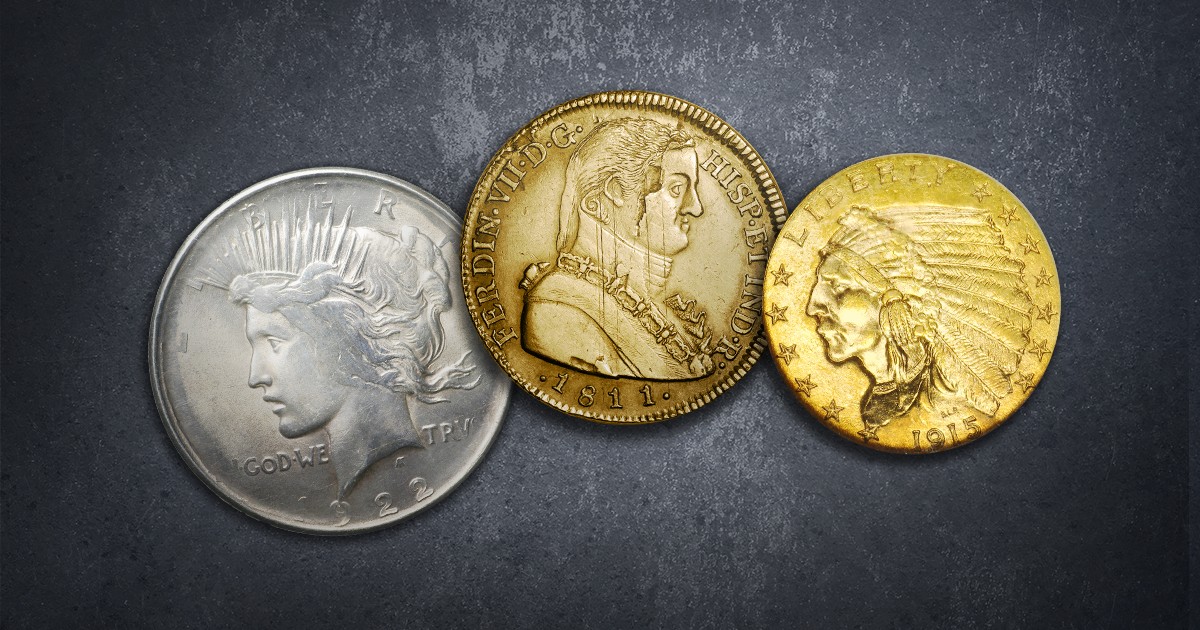
Die adjustment marks are a distinctive coin feature formed when mint staff calibrate the striking pressure of dies during setup. These marks often appear as parallel, soft-edged lines on coins that have been weakly struck due to insufficient pressure. While they are primarily associated with early coins from the U.S. Mint, they occasionally appear on modern coinage due to initial press calibrations or maintenance adjustments.
A related phenomenon known as weight adjustment marks can sometimes be mistaken for die adjustment marks. However, weight adjustment marks occur before striking when mint workers file or scrape excess metal from planchets to meet legal weight standards. Both marks seldom occur on modern coins.
Historical Context and Evolution of Die and Weight Adjustment Marks
Die Adjustment Marks
- Common in early U.S. coin production (18th–19th centuries) due to manual striking pressure adjustments.
- Found on coins like early half dollars (1794-1836).
Weight Adjustment Marks
- Also prevalent in pre-20th century coinage, when precise planchet manufacturing was not yet perfected.
- Mints used files or scrapers to remove excess metal from overweight planchets before striking, leaving behind distinctive pre-strike gouges or scrapes.
How Die and Weight Adjustment Marks Occur
| Feature | Die Adjustment Marks | Weight Adjustment Marks |
| Cause | Occur when striking pressure is too low during die setup | Occur when excess metal is manually filed off a planchet to adjust weight |
| Process Timing | Occur during striking calibration | Occur before striking, during planchet preparation |
| Appearance | Parallel, uniform lines from insufficient pressure | Scrape-like marks that appear rough and irregular |
| Location on the Coin | Found on the fields (flat areas) due to weak strike | Can appear anywhere on the planchet, including the rim |
| Effect on Strike Details | Weak or missing details in coin design | May be struck over, partially erasing the marks |
| Impact on Coin Grading | May result in a lower grade if severe | Typically has less impact unless marks are highly visible after striking |
Formation and Impact of Die Adjustment Marks
Die Setup and Calibration
Before full-scale coin production begins, the press operator must calibrate striking pressure:
- The initial test strikes use low pressure, resulting in weak designs.
- If pressure is too low, the die lightly contacts the planchet, creating parallel lines without fully imprinting the design.
- Once the correct pressure is found, the operator locks the ram pressure bolt to maintain consistency.
How Die Adjustment Marks Affect Strike Quality
- Weak or missing details appear in the coin design.
- Soft, parallel lines can be seen in the fields of the coin.
- Modern quality control measures aim to minimize these occurrences, but they still appear occasionally.
Formation and Impact of Weight Adjustment Marks
What Causes Weight Adjustment Marks
- Before precise planchet manufacturing, weight tolerances had to be manually adjusted.
- If a planchet was overweight, mint workers would file or scrape away excess metal before it was struck.
- Unlike die adjustment marks, weight adjustment marks are not a result of the striking process.
How Weight Adjustment Marks Appear on Coins
- Scrape-like marks can be found anywhere on the coin, including the rim.
- If the filing marks were light, the striking process could erase them, leaving little or no trace.
- If the filing was deep, the marks remain visible even after striking.
How Weight Adjustment Marks Affect Coin Grading
- If marks are faint or struck over, they have minimal impact on grading.
- Deep or prominent marks can lower a coin’s eye appeal but are still considered mint-made and not post-mint damage.
How do NGC and PCGS Grade Adjustment Marks?
Die adjustment marks and weight adjustment marks present unique challenges for grading and authentication services, particularly when distinguishing between mint-made anomalies and actual damage. PCGS and NGC, two respected third-party grading organizations, use distinct methodologies to assess how these marks affect a coin’s grade, market value, and collectability.
How PCGS and NGC Assess Die and Weight Adjustment Marks
Both PCGS and NGC evaluate die adjustment marks and weight adjustment marks based on:
Severity and Visibility
- If die or weight adjustment marks are subtle and do not detract from the coin’s eye appeal, they may have minimal impact on the grade.
- If marks are deep, widespread, or obscure key design elements, the grade is likely to be lower than it would be without these marks.
Historical Context Consideration
- Die adjustment marks were common in early U.S. coinage, particularly before automated striking calibration.
- Weight adjustment marks were an intentional part of the minting process for many pre-19th-century coins, and as such, they are often graded more leniently.
Certified but Ungraded Mint Errors
- Some die adjustment strikes and weight-adjusted planchets lack sufficient detail to receive a numerical grade.
- In such cases, NGC and PCGS certify them as Mint Errors but do not assign a grade due to the incomplete strike or extreme surface modification, as they sometimes do with Details graded coins.
Both die adjustment marks and weight adjustment marks provide insight into historical minting techniques. While die adjustment marks result from low-pressure striking, weight adjustment marks are pre-strike modifications made to correct planchet weight. Understanding these differences allows collectors to accurately identify and assess these marks when evaluating numismatic coins.




